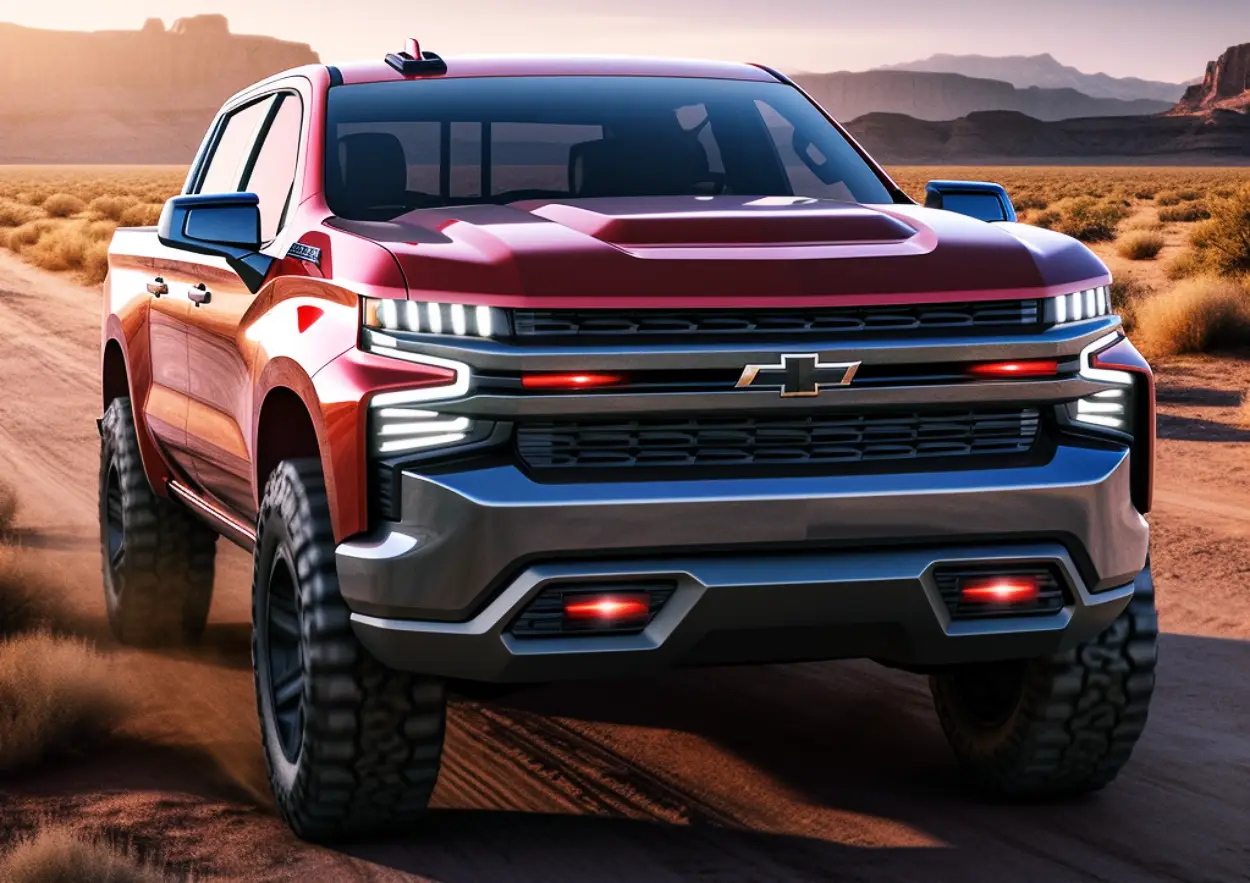When it comes to reliability, nothing kills a good vehicle faster than a weak transmission. Whether you’re off-roading, towing, or just stacking up high mileage, a bulletproof gearbox is the foundation of a dependable ride. The ten vehicles below are known for having transmissions so durable, they’ve become legendary.
When it comes to building a vehicle that truly lasts, the engine usually gets all the attention — but ask any mechanic or gearhead, and they’ll tell you the real MVP is the transmission. It’s the middleman between power and performance, and if it fails, it doesn’t matter how strong your motor is.
Whether you’re towing heavy, hitting trails, or racking up serious mileage, you need a transmission that can take punishment and keep going. The vehicles in this list don’t just perform — they’re proven workhorses with gearboxes so tough, they’ve earned reputations for being damn near indestructible. If you’re looking for a ride with a drivetrain you can count on, these are ten of the best.
1. Toyota Land Cruiser (80 & 100 Series)
Transmissions: Aisin A442F (auto), H151F (manual)
The Toyota Land Cruiser has built its legacy on overengineering, and its transmissions are no exception. The Aisin A442F automatic and H-series manuals in the 80 and 100 Series are designed for the harshest environments on Earth. These gearboxes are still running strong after hundreds of thousands of miles in desert convoys, jungle expeditions, and war zones.
The Land Cruiser 80 Series made its debut at the Tokyo Motor Show in October 1989 and officially launched in early 1990 as a replacement for the FJ62 in the U.S. and other 60 Series variants globally. Initially, it featured swing-out rear doors, but in 1994 these were swapped for a tailgate and hatch configuration.
In the U.S. and several international markets, the model was first offered with Toyota’s 3F engine, designated as the FJ80. For regions where diesel engines were in demand, Toyota provided both turbocharged and naturally aspirated 4.2-liter diesel options, resulting in models labeled HDJ80, HZJ80, or HZJ81.
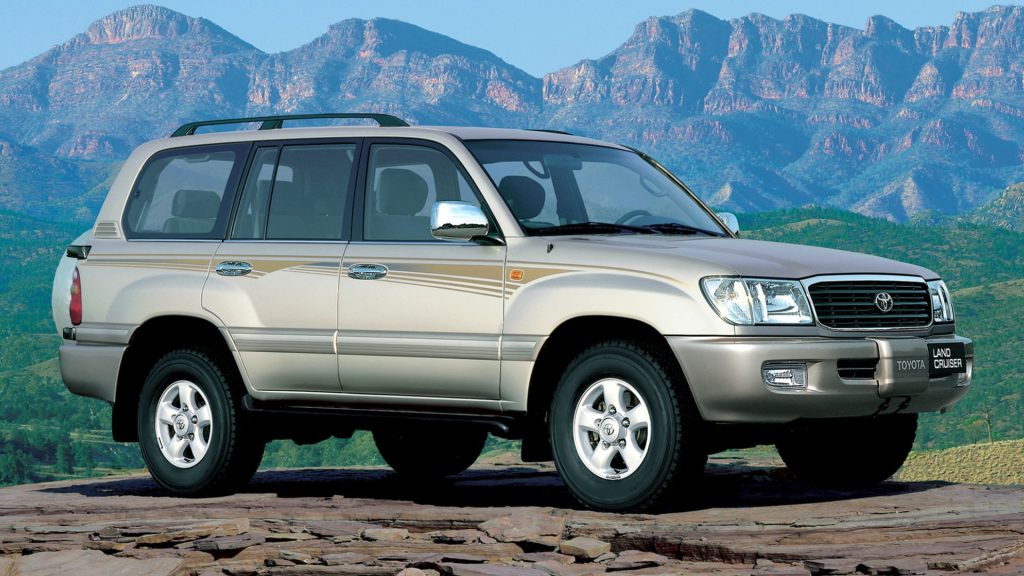
By 1992, Toyota introduced the FZJ80, powered by the more refined 1FZ-FE engine — a 4.5-liter, 24-valve, inline-six gasoline engine that offered enhanced performance. The final year of production for Japan and U.S. markets was 1997, during which Toyota released two commemorative editions: the “Collectors Edition” and the “40th Anniversary Edition.”
Although the 100 Series Land Cruiser replaced the 80 Series in 1998, production of the 80 Series continued in Venezuela until its discontinuation in 2008. In Colombia and Venezuela, the 80 Series earned the nickname “Burbuja” (Bubble), referencing its rounded body design.
2. Ford Super Duty (7.3L Power Stroke Era)
Transmissions: ZF S6-650 (manual), 4R100 (auto)
The late-‘90s to early-2000s Ford Super Duty trucks with the 7.3L Power Stroke diesel are practically unkillable. The ZF 6-speed manual and 4R100 automatic were built to handle intense loads and high-mileage abuse. These transmissions are still favored among diesel enthusiasts for their raw strength and long life.
In 1994, the diesel truck landscape changed permanently. That year, Ford introduced the 7.3L Powerstroke engine — built by International Navistar — into its Heavy Duty truck lineup. This engine delivered significantly better performance than its 6.9L IDI and earlier 7.3L non-Powerstroke versions.
It also proved to be much more reliable than its successor, the 6.0L Powerstroke. The 7.3L Powerstroke quickly became a major win for Ford, but what exactly made these trucks stand out?
Below, we’ll explore the core specifications and engineering features of the 7.3L Powerstroke engine that make these vehicles so valued, even decades later. We’ll also break down model-year changes, the engine’s historical background, and towing capabilities. Let’s take a closer look.
Although the 7.3L Powerstroke can’t match the capabilities of modern diesel engines in terms of raw output, its straightforward, rugged design is key to its enduring success. These engines were engineered to be durable workhorses, able to run for hundreds of thousands of miles with minimal issues.
In fact, a version of this same engine — known as the T444E — was used in medium-duty commercial trucks, sharing nearly all of its internal components with the consumer version. This crossover means the engine is effectively “overbuilt” for pickup truck use, giving it a distinct edge.
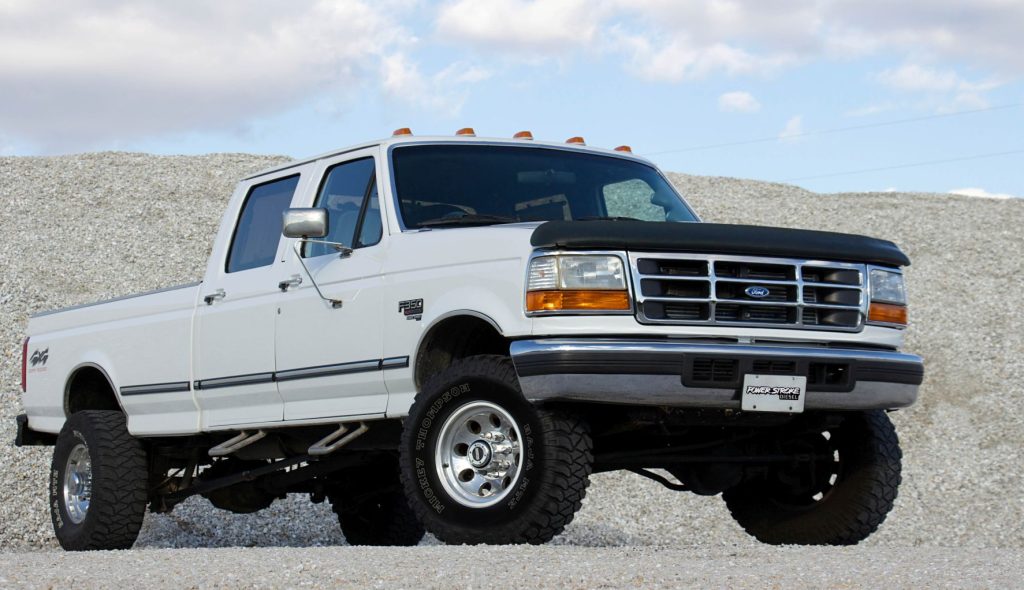
The 5.9L Cummins engine enjoys similar benefits due to its original design for heavy-duty hauling and farming applications. The long-lasting nature of the 7.3L Powerstroke is easy to see when you examine its specifications and mechanical construction.
The engine features a cast-iron block and cast-iron cylinder heads, both of which contribute to its strength and resistance to wear. Each cylinder is secured with six head bolts, which improves the clamping force between the head and block. This configuration offers far more strength than what was found on the earlier 7.3L IDI engine or even the 6.0L Powerstroke that followed.
The 7.3L Powerstroke is often recognized as one of the most reliable diesel engines ever made. Its reputation is so strong that even hardcore Cummins and Duramax fans acknowledge its broad success.
As a result, these trucks have become highly desirable in the used market. In fact, it’s not uncommon to see 7.3L Powerstroke-equipped trucks with over 200,000 miles still selling for $10,000 or more.
That may seem like a steep price for a 20-year-old truck, but many owners will argue they’re absolutely worth it. If you’re shopping for your first diesel on a limited budget, this is one of the top platforms you should consider.
One of the defining differences between the 7.3L Powerstroke and the earlier 7.3L IDI engine lies in the fuel injection method. The IDI — which stands for indirect injection — utilizes a pre-combustion or swirl chamber where fuel mixes with air before entering the main combustion chamber.
In contrast, the 7.3 Powerstroke’s direct injection system sends fuel straight into the combustion chamber, leading to more efficient power generation and cleaner emissions.
Over time, the HPOP can wear out and deliver subpar performance, which may result in injector starvation, reduced power, poorer fuel economy, and overall decreased reliability.
Fortunately, aftermarket options like the Adrenaline HPOP for 1996–2003 7.3L Powerstroke engines can restore and even enhance performance beyond factory levels. These upgrades benefit even stock trucks, making them one of the most popular 7.3L Powerstroke performance enhancements available.
Also Read: Top 12 Cars That Run Like New Even After 15 Years With Minimal Maintenance
3. Jeep Cherokee XJ (1984–2001)
Transmission: Aisin-Warner AW4 (auto)
If there’s one automatic transmission that refuses to die, it’s the AW4 in the Jeep Cherokee XJ. Whether you’re rock-crawling, daily driving, or just ignoring your maintenance schedule, the AW4 keeps shifting. Its simple design and tough internals make it a go-to for Jeep fans and off-roaders worldwide.
This generation of the Jeep Cherokee, known as the XJ, was manufactured by the American automaker Jeep from 1984 to 2001. It features a front-engine layout with four-wheel drive and was offered in either three-door or five-door body styles.
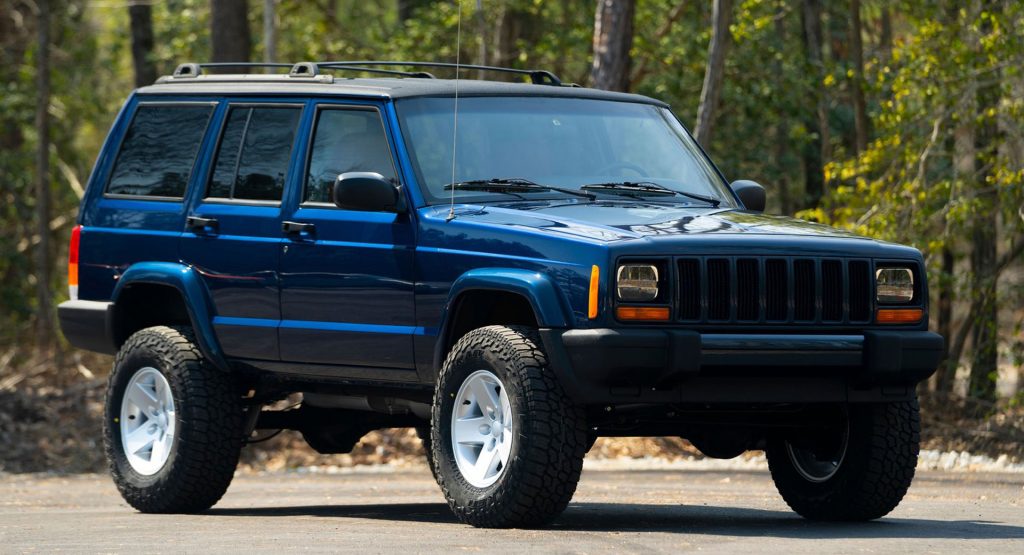
A wide range of engine options was available for this model, starting from an 86 BHP 2.1-liter inline-four turbo diesel engine and extending up to a 181 BHP 4.0-liter inline-six petrol engine. The vehicle was built with solid axle front suspension and a live axle in the rear, giving it the rugged durability Jeep SUVs are known for.
This model delivers 181 BHP, resulting in a power-to-weight ratio of 117 BHP per tonne. It reaches a top speed of 112 mph and accelerates from 0 to 62 mph in 12.0 seconds. The version offers an impressive range of 503 miles and a cargo capacity ranging from 1,070 to 2,030 litres. Additionally, it has a respectable towing capacity of 1,600 kg, making it a solid choice for utility-focused drivers.
4. Honda Accord (1990s–early 2000s, Manual)
Transmission: Honda 5-speed manual
While Honda automatics of the early 2000s had some issues, the manual transmissions from this era were absolute workhorses. The 5-speed manual found in Accords is lightweight, durable, and smooth-shifting. With regular clutch replacements, these gearboxes can run trouble-free for over 300,000 miles.
As coupe sales have sharply declined and consumer interest continues to shift toward SUVs, the remaining two-door vehicles on the market are often the result of brand collaborations—such as the Toyota GR 86 and Subaru BRZ—or are streamlined into a single model that replaces several others, like the Mercedes CLE.
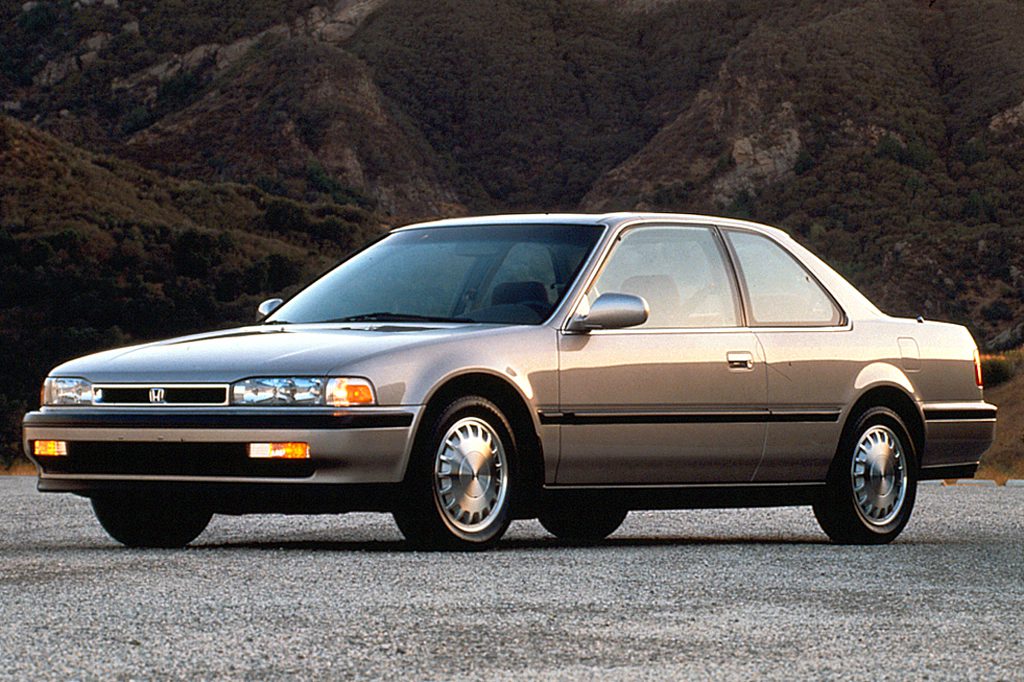
The final generation of the Honda Accord Coupe ceased production in 2017 and was never succeeded by a new model. This marked the end of a lineage that had begun in 1987, spanning over 30 model years.
Throughout that time, the Honda Accord Coupe underwent a full redesign roughly every three to four years; however, as demand decreased in the coupe segment, the redesign cycle was extended to five years in order to maximize each generation’s lifespan.
By the time the eighth generation rolled out, the Accord’s design for the North American market had already diverged significantly from the versions produced for Europe and Japan, and it included the option of a V6 engine.
5. Chevrolet Silverado/GMC Sierra 2500HD (Duramax Diesel)
Transmission: Allison 1000 (auto)
The Allison 1000 is the holy grail of heavy-duty transmissions. Originally developed for medium-duty commercial trucks, it became the perfect match for the Duramax diesel in GM’s 2500HD pickups. It’s smooth under normal driving and a beast under pressure, capable of towing massive loads without breaking a sweat.
The GMC Sierra HD pickup can be seen as the more rugged and muscular counterpart to the widely popular Sierra 1500 half-ton. Built with reinforced components and more robust running gear, the Sierra 2500HD and 3500HD models easily surpass the 1500 in towing and hauling capabilities—and they do so with confidence. However, having the strength to handle tough jobs doesn’t mean sacrificing comfort.
The Sierra HD lineup can be configured to match a range of preferences, from basic utility to high-end luxury. For those seeking upscale refinement, the available Denali and Denali Ultimate trims offer “the type of comforts and conveniences once reserved for luxury sedans,” positioning the Sierra HD above its sibling, the Chevrolet Silverado HD, in terms of luxury and interior features.
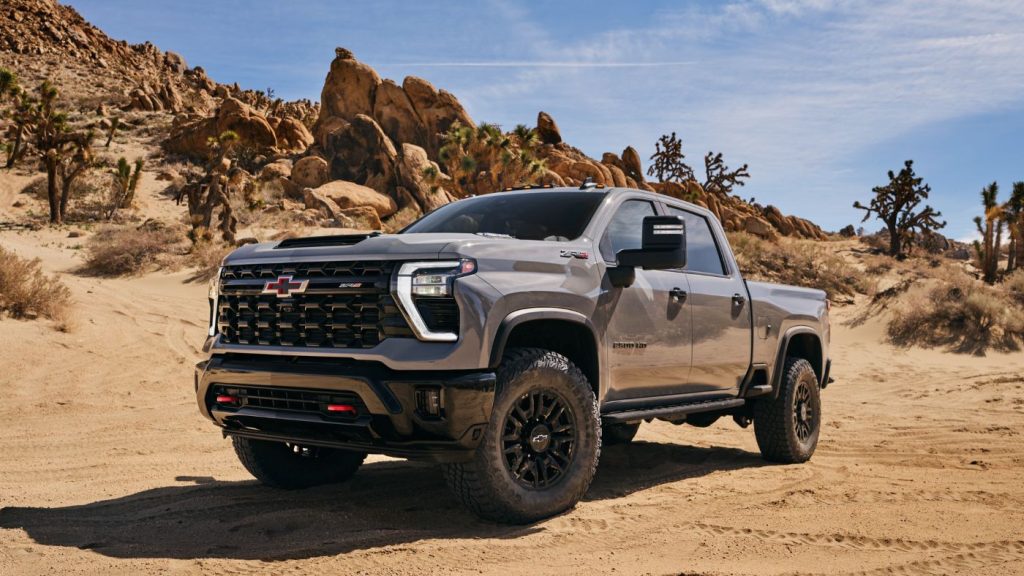
Under the hood, buyers can choose between a 401-hp 6.6-liter V-8 engine paired with a 10-speed automatic transmission or, for those needing serious towing capability, a 445-hp Duramax turbo-diesel V-8 also mated to a 10-speed, which delivers a maximum conventional towing capacity of 22,500 pounds. “Up to 36,000 pounds is possible with dual rear wheels and a gooseneck hitch.”
Even though this segment is closely contested, with the Ram HD and Ford Super Duty being its primary direct rivals, the GMC Sierra HD stands out as a powerful, reliable workhorse that doesn’t hesitate to treat its occupants to comfort and convenience once the job is done.
Also Read: 10 Engines That Outlast the Rest of the Car With Unmatched Durability
6. Toyota Hilux (Global Models)
Transmissions: R151F (manual), A340F (auto)
The Toyota Hilux has been to more battlefields and remote outposts than any other truck. It owes a lot of that reputation to its transmission options. Both the R-series manual and Aisin-built automatics are simple, reliable, and capable of withstanding brutal abuse and minimal maintenance in the harshest conditions.
The 2015 Toyota HiLux is a 4×2 Pick-up or Cab Chassis vehicle, available in either cab-chassis (double-cab) or pick-up (double-cab) body styles. In the Australian used car market, prices generally range from “$18,990 for the Workmate variant and topping out at $55,990 for the SR5.”
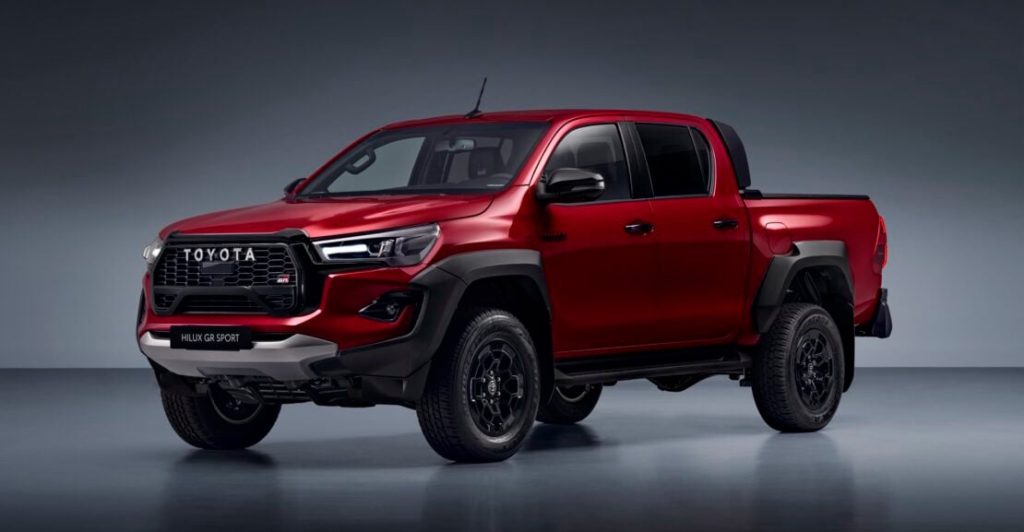
This generation of the HiLux was introduced to the Australian market in January 2014, offering four distinct variants. Engine choices include a 3.0L turbo diesel common rail producing 126kW and 343Nm, a 4.0L multi-point injection engine rated at 175kW and 376Nm, a 2.8L turbo diesel common rail delivering 130kW and 420Nm, another 4.0L multi-point injection engine with identical output at 175kW and 376Nm, and a 2.7L multi-point injection engine generating 116kW and 240Nm.
Transmission options span across 5-speed manual, 5-speed automatic, 6-speed manual, 6-speed automatic, and 4-speed automatic gearboxes. Buyers could choose between rear-wheel drive and four-wheel drive configurations, depending on their driving needs. The 2015 HiLux was also backed by a warranty of “3 years, 100,000 km.”
7. Subaru Outback (1999–2004, Manual)
Transmission: Subaru 5-speed manual
Older Subaru Outbacks with manual transmissions may not be flashy, but they are shockingly durable. The 5-speed manual handles cold starts, rough terrain, and long commutes with ease. While clutches wear out like any manual, the gearbox itself is stout and often lasts the life of the car.
Subaru sets itself apart from mainstream automakers by focusing heavily on its all-wheel drive (AWD) offerings, effectively creating a unique niche that competitors are only now starting to recognize.
This has proven to be a smart strategy, as many loyal Subaru customers continue to support the brand precisely because of its wide array of AWD models. In the early 1990s, Subaru attempted to compete with Nissan, Toyota, Honda, and Mazda by offering standard front-wheel drive vehicles aimed at the mass market. However, those two-wheel drive models performed poorly in the marketplace.
Today, Subaru is experiencing growing success in the United States, thanks in part to increased consumer awareness of the safety benefits of AWD vehicles, as well as the rising popularity of sport utility vehicles.
In 1996, Subaru launched a raised, rugged version of its popular Legacy station wagon, called the Outback, and marketed it as “the world’s first sport utility wagon.”
Following the principle of “if it ain’t broke, don’t fix it,” Subaru took a conservative approach for the 1999 model year. During the summer of 1998, the company introduced the Sport Utility Sedan (SUS), essentially a Legacy sedan dressed up with Outback styling.
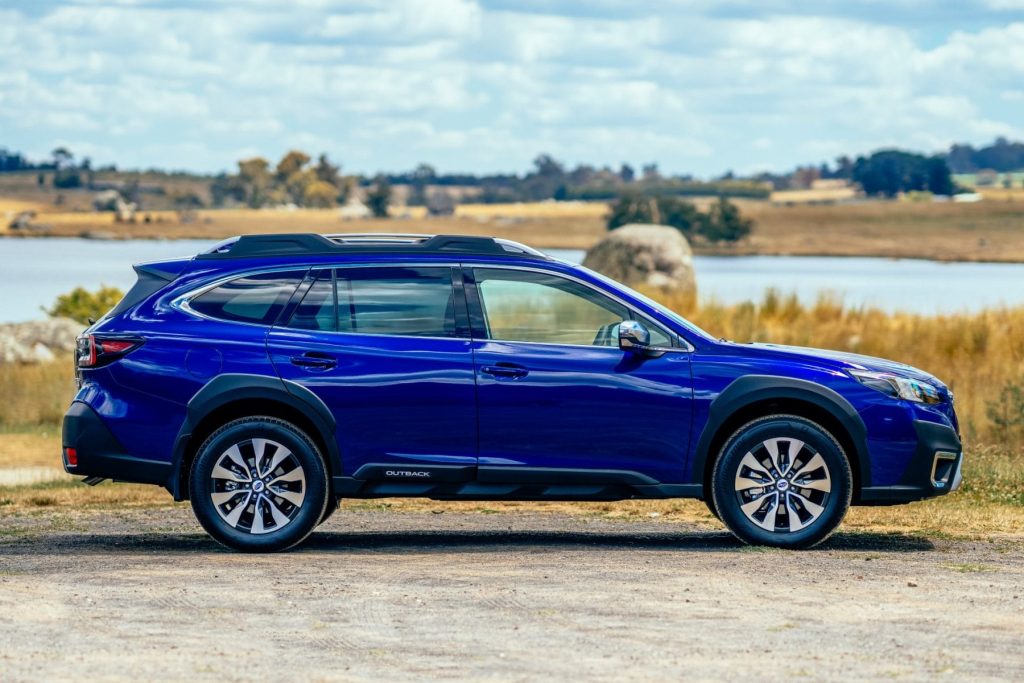
Additionally, Subaru launched a couple of new 30th Anniversary models in L trim, which came equipped with features such as a power moonroof, alloy wheels, and other standard amenities.
Two new paint options, Sandstone Metallic and Winestone Pearl, were added to the palette, and all 2.5GT, Limited, and Outback models received standard remote keyless entry. A manually shifted version of the 2.5GT Limited sedan was also new for 1999.
Buyers had two engine choices in the Legacy range. The Brighton and L trims were powered by a 2.2-liter, 137-horsepower boxer engine. Meanwhile, the 2.5GT, SUS, and Outback were equipped with a 2.5-liter flat-four engine producing 165 horsepower, delivering lively acceleration—especially when paired with a manual transmission.
There are excellent values to be found across the Legacy lineup. The L model includes cruise control, a tachometer, power door locks, and four-wheel disc brakes with ABS as standard.
8. Mercedes-Benz G-Class (Diesel W463 Models)
Transmission: 722.6 5G-Tronic (auto)
The 722.6 automatic transmission was used in everything from E-Class sedans to military-grade G-Wagens. Its reputation is built on a blend of comfort and toughness. In the diesel G-Class models, it’s known to last beyond 300,000 miles, even with heavy off-road or towing use.
When the German automaker introduced the original G-Class in 1979, it was built as a utility vehicle, intended primarily for military use. Over time, however, the G-Class evolved into a luxury item, turning into a status symbol for those with deep pockets. In fact, certain versions became even more expensive than the brand’s flagship model, the S-Class.
Despite this shift toward luxury and exclusivity, the automaker paid homage to the G-Class’s utilitarian origins with the development of the 2016 G-Class Professional.
Though this model was no longer based on the W461 chassis—used for military and workhorse variants—it adopted the W463 platform, the same one used by high-end or performance-focused models like the G 65 AMG. B
uilt to handle any terrain nature could offer, the G-Class Professional was still expensive, but its high cost was due to the robust engineering and technology that enabled it to endure extreme conditions—such as theoretically circumnavigating the globe ten times—relying only on routine maintenance and never breaking a sweat.
The exterior made it clear that this was not a fashion-forward luxury SUV. It came without any chromed accents or flashy trim. At the front, there was just a matte-black three-pointed star emblem and a similarly colored three-slat grille. Round headlights were accompanied by LED daytime running lights, not for aesthetics, but to comply with modern regulations.
Customers also had the option to add protective metal grilles for the headlights. The standard plastic front bumper could be swapped for a steel one, designed specifically to accommodate a winch tucked behind it.
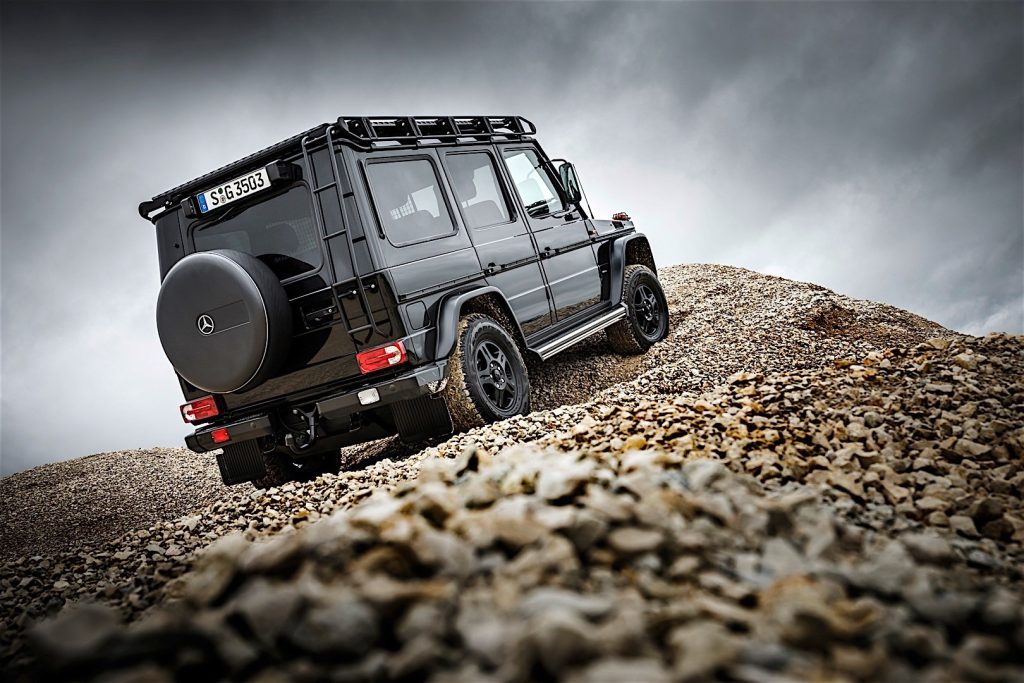
From the side, the G-Class Professional’s utilitarian purpose became even more evident. It had tall, truck-style door mirrors without integrated turn signals. Even the metallic side steps were optional, featuring exposed aluminum frames to give users added confidence in their sturdiness.
The black fender flares were made from unpainted plastic—easily replaceable in case they were damaged by rocks or other trail hazards. The vehicle rode on five-spoke, 16-inch alloy wheels equipped with all-terrain tires, though customers had the option to swap these for more aggressive mud-terrain (MT) versions.
At the rear, it featured a uniquely designed bumper that incorporated both a red fog light and a clear reversing light. A range of exterior accessories was also available, including a roof rack and ladder mounted beside the side-hinged rear door.
Inside, the cabin stripped away most features typically expected in a 2016 vehicle. All four doors were fitted with manual window cranks. The seats were manually adjustable and came with cloth upholstery. There was no touchscreen for an infotainment system; in its place was an oval badge bearing the word “Professional.”
At the very least, Mercedes-Benz did include an air-conditioning system, controlled via large, circular knobs. The gear selector for the automatic transmission was positioned on the center console, and the driver faced a dual-dial instrument cluster designed in the same binocular style used in the GLE-Class.
Powering the 2016 W463 G-Class Professional was a 3.0-liter turbodiesel engine sourced from Mercedes-Benz’s existing powertrain lineup. It was mated to a seven-speed automatic transmission.
Like other G-Class models, it featured a two-speed transfer case and three manually lockable differentials, enhancing its off-road capability. However, the Professional variant stood apart from the rest of the lineup by offering stiffer suspension springs and dampers, allowing it to support heavier loads either inside the vehicle or mounted to its optional roof rack.
9. Dodge Ram 2500/3500 (5.9L Cummins, Manual)
Transmissions: NV4500, NV5600 (manual)
The NV4500 and NV5600 are some of the most respected manual transmissions ever used in diesel trucks. When paired with the legendary 5.9L Cummins, these gearboxes handle massive torque without hesitation. Many diesel tuners actively seek these out for drivetrain swaps in high-power builds.
Here is the rewritten excerpt as a single paragraph, preserving the meaning, length, and all quoted text as per your instructions:
For 2015, the Ram 2500 and 3500 receive several updates, including new power-folding mirrors, an added exterior color option, available “work grade” vinyl seats, hill descent control for Power Wagon models, and a refreshed instrument panel for SLT trims equipped with the Luxury Group package.
These heavy-duty trucks are available with three engine choices—a 5.7-liter V-8, a 6.4-liter V-8, and a turbocharged 6.7-liter inline-six diesel—paired with a six-speed automatic transmission, while the diesel also offers a six-speed manual.
Power output ranges from 383 hp and 400 lb-ft of torque in the 5.7-liter to 410 hp and 429 lb-ft in the 6.4-liter V-8. The diesel engine offers varying output based on the transmission: 350 hp and 660 lb-ft (manual), 370 hp and 800 lb-ft (automatic), and up to 385 hp and 865 lb-ft (automatic in the 3500 only).
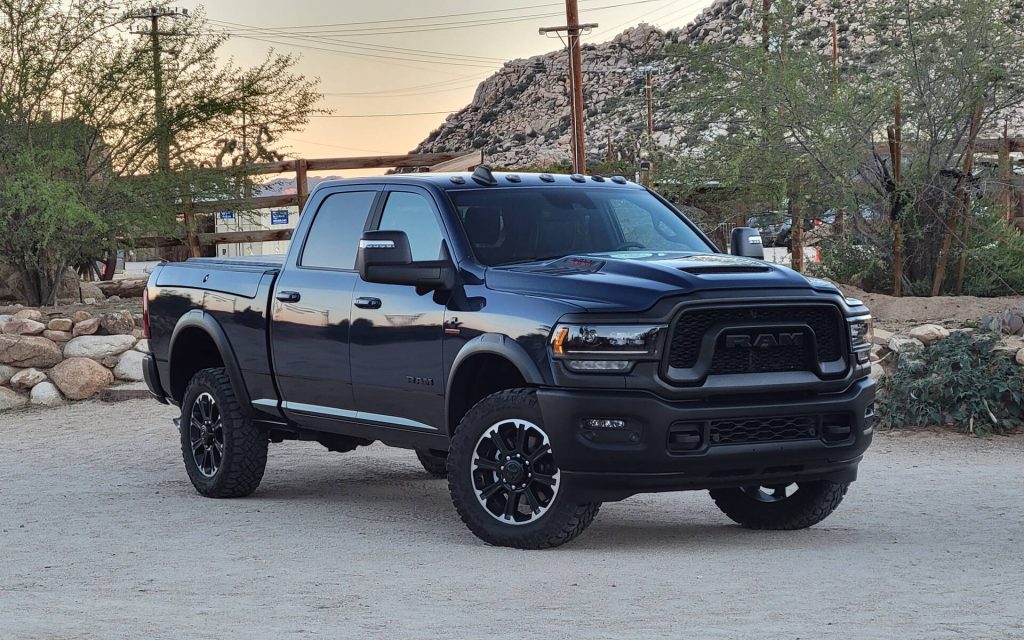
Towing capacity is equally impressive, maxing out at 13,870 pounds (2500) and 13,910 pounds (3500) with the 5.7-liter, 16,450 pounds (2500) and 16,520 pounds (3500) with the 6.4-liter, and up to 17,970 pounds (2500) or 30,000 pounds (3500) when equipped with the diesel.
Both models are offered in multiple trims—ten for the 2500 and six for the 3500—and configurations include three cab styles, two bed lengths, and rear- or four-wheel-drive setups. On the road, the trucks perform admirably, particularly with the diesel engine, which delivers “what seems like endless torque,” making heavy towing feel effortless.
The 2500 Power Wagon stands out for its off-road capabilities, bolstered by a well-tuned chassis, while both trucks remain relatively easy to handle despite their size and “don’t feel as long and wide as \[they are].” The downside remains the rough ride quality, especially when unloaded, and the brakes and steering are noted as needing improvement to be “more confidence-inspiring.”
Inside, the Mega Cab versions provide ample space and offer various tech features, including a rearview and bed camera, an 8.4-inch touchscreen with available navigation, and ventilated seats. The premium feel of the cabin is especially notable in Laramie Longhorn trims, which represent the most luxurious option in the lineup.
Chrysler’s user-friendly UConnect system adds further appeal, enhancing convenience and infotainment capabilities. While the NHTSA and IIHS had not crash-tested the 2015 Ram 2500 and 3500 at the time, these trucks remain strong choices for heavy-duty work thanks to their power, utility, and well-equipped interiors.
The 3500 diesel model is “easy to drive and extremely capable,” and the 2500 Power Wagon delivers off-road strength with confidence. Interior quality and build are standout features, with even the base Laramie trims feeling “surprisingly luxurious.”
However, buyers may pause at the harsh ride when unladen, the Power Wagon’s poor fuel economy, and the diesel’s \$8,195 price premium, which might make the gas V-8s a more appealing value proposition.
10. Toyota Tacoma (1995–2004)
Transmissions: R150F (manual), A340E/F (auto)
Early Toyota Tacomas are prized for their no-nonsense toughness, and their transmissions are a big reason why. The R-series manual and Aisin automatic gearboxes are known for their simplicity, durability, and off-road capability. Many Tacomas from this era are still on the road with original transmissions and well over 300,000 miles.
A strong engine will get you moving, but a bulletproof transmission keeps you moving for good. The vehicles above are proof that the right gearbox can be the difference between a temporary ride and a lifetime companion.
If you’re building, buying, or modifying a vehicle for serious work or play, start by checking what’s inside the bellhousing — because a strong transmission is the heart of long-term reliability.
Here’s the rewritten version of the excerpt, following your guidelines—meaning is unchanged, nothing is shortened, and all quoted text is preserved:
Toyota introduced the first-generation Tacoma for the 1995 model year, replacing the Pickup in the North American market—and with good reason. While the Pickup had enjoyed success in both the U.S. and Canada, Toyota recognized a shift in consumer behavior: North American buyers often used their pickup trucks as personal vehicles or family transport rather than for heavy-duty tasks.
This insight led Toyota to prioritize comfort and everyday usability in the Tacoma’s design, treating it as a car first and a pickup second. That doesn’t mean capability was ignored, but far more attention was given to comfort and convenience than in its predecessor.
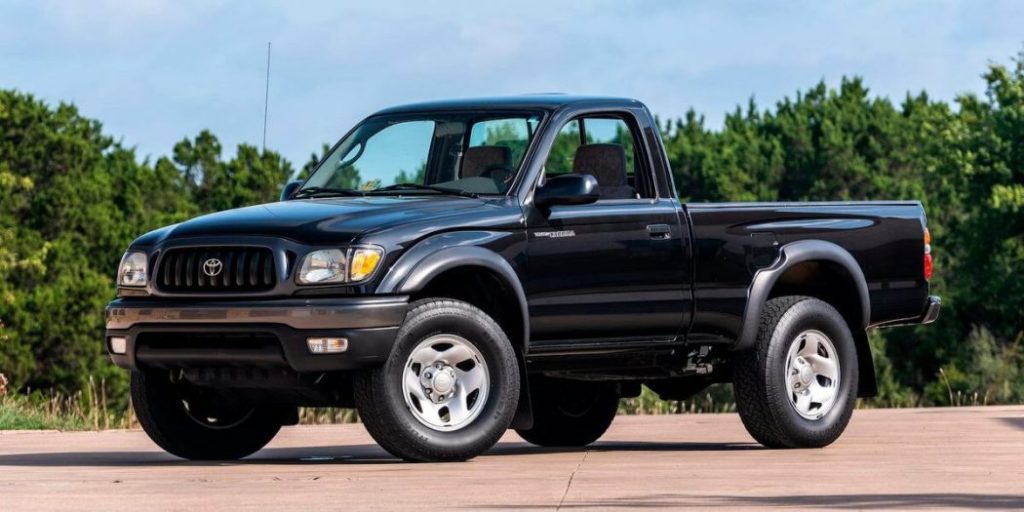
Although the Tacoma and the Hilux served different markets, they shared the same fundamental platform, along with the 4Runner from the same era—a trend that continues today.
However, the Tacoma departed from some of the Hilux’s hallmark features, most notably the omission of a diesel engine. Diesel powertrains typically only find favor in North America’s heavy-duty truck segment, so Toyota equipped the first-gen Tacoma exclusively with gasoline engines.
Styling-wise, the Tacoma was simple and utilitarian, reflecting a time before truck aesthetics became a major selling point. The Tacoma was purely a truck in terms of design.
When compared to the bold, complex styling of today’s Tundra, the simplicity of the early Tacoma is striking. Its front fascia was flat and featured square headlights and a straightforward grille, well before oversized grilles and prominent brand lettering became the norm.
The truck’s side profile provided clues to its configuration. Toyota offered the Tacoma in three cab styles: a single cab, an Xtracab (extended cab), and a double cab. Depending on the trim, some versions also came with decorative side graphics. The rear design was as classic and straightforward as you’d expect from a traditional pickup.
The first-generation Tacoma came with either rear-wheel drive or four-wheel drive, three cab styles as mentioned, and two bed lengths. Regular and Xtracab models were equipped with a standard six-foot bed, while the double cab variant came with a 5.5-foot bed. Toyota made three different powertrain options available, but there were no high-end trims like today’s Capstone or TRD Pro.
Its main rivals at the time included the Ford Ranger, Chevrolet S10, Nissan Frontier, and the Dodge Dakota—which even had a Shelby variant. Production of the first-gen Tacoma took place at Toyota’s NUMMI plant in Fremont, California, and the model remained in the lineup until 2004. It was succeeded by the second-generation Tacoma, which launched for the 2005 model year.

